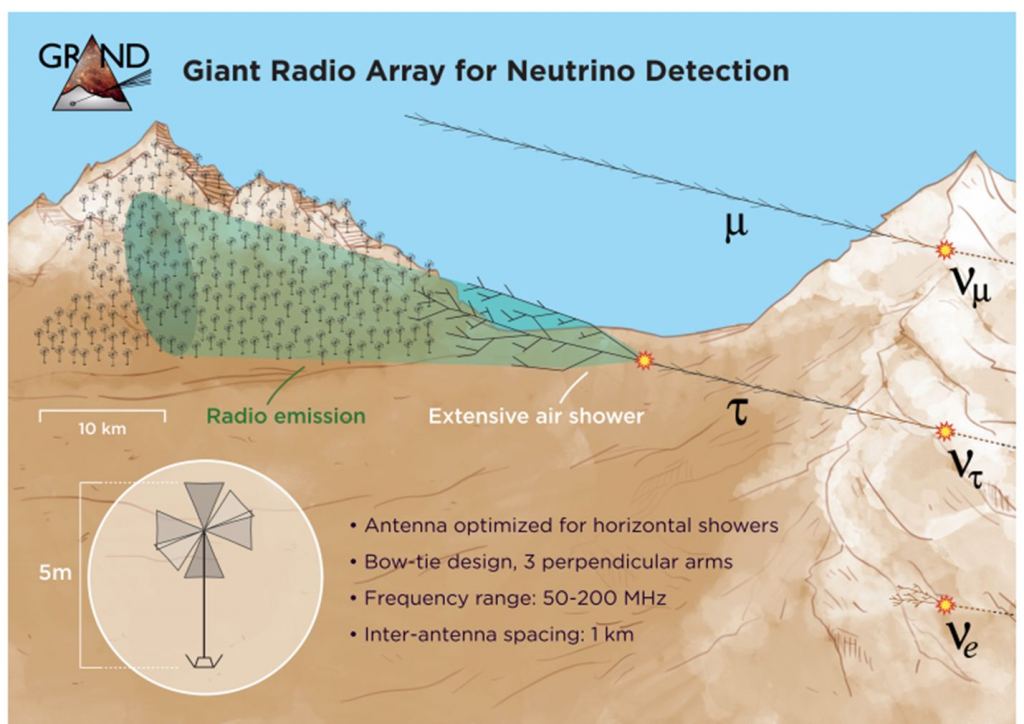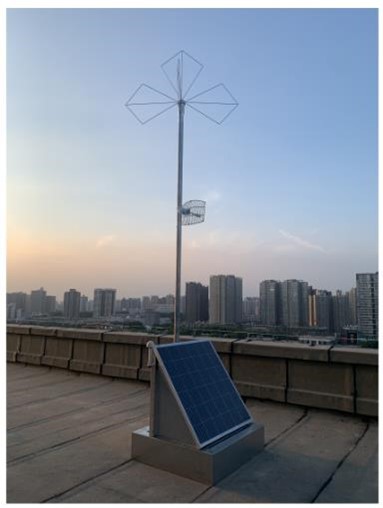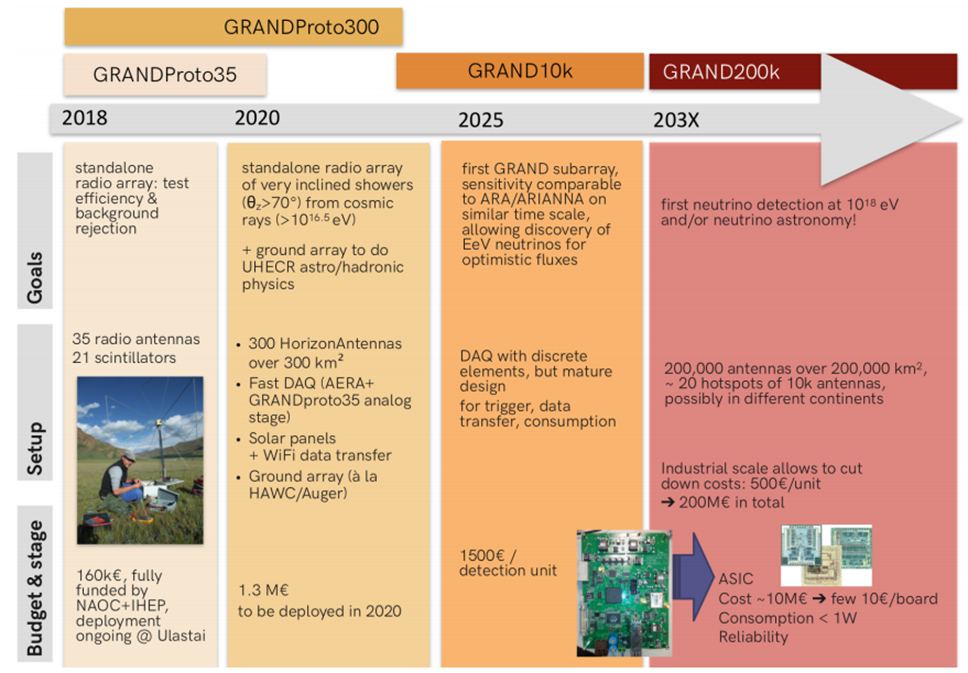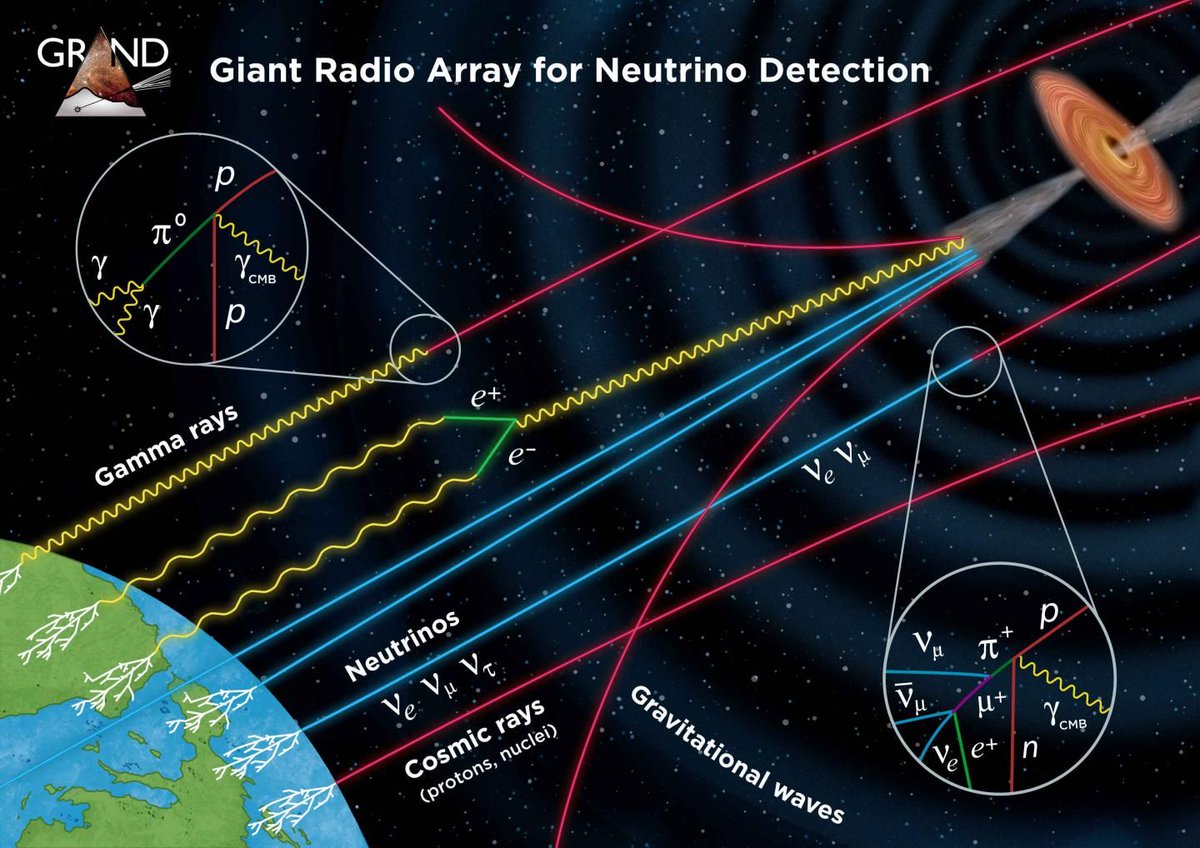Sometimes in astronomy the acronym for a project fits it particularly well. That would absolutely be the case for the Giant Radio Array for Neutrino Detection, who hopes to scale up to a size of 200,000 sq km in an effort to measure ultra-high-energy tau-neutrinos. Is it ambitious? Yes, but that doesn’t really stop humanity from exploring when it wants to.
The project is the brainchild of the GRAND Collaboration, hosted by CNRS, Frances’ Center for Scientific Research. The Collaboration has already had some workshops, and has developed a roadmap to reach their truly ambitious scale. To understand the roadmap though, first it is helpful to understand what the project is looking for.
GRAND will look for what are known as ultra-high-energy neutrinos. These neutrinos play a large role in the Standard Model of particle physics, but so far have evaded detection at the energy levels where they are primarily predicted. They can come from two sources. The first is directly from ultra-high-energy (UHE) cosmic rays, while the second is when the UHE cosmic rays interact with the cosmic microwave background that pervades the universe.
Credit: Unveiled Youtube Channel
The specific type of neutrino that GRAND is looking for is called a tau-neutrino. These are not a direct result of the neutrino-formation events described above, but they are a subsequent form of the muon and electron type neutrinos these events do create. As such, some of those particles would “oscillate” into tau-neutrinos.
The reason tau-neutrinos are of interest is that they have a “just right” chance of being detected. Essentially the project scientists would be relying on the relatively high probability that UHE neutrinos interact with ordinary matter. Of the three types of neutrino UHE cosmic rays create, the electron simply gets stuck in any ordinary matter it interacts with, while the muon continues to travel through the ordinary matter even if it does interact with it. The “sweet spot” of detection is the tau-neutrino, which does interact with regular matter and it decays within about 50 km of where it interacts with ordinary matter.
Credit: MinutePhysics Youtube Channel
The GRAND telescope can pick up that decay, and will be especially placed to do so. The term for the decay of such a tau-neutrino is called an “air shower”, where the tau-neutrino is then detectable. But first, it has to interact with some form of normal matter, and what better mass or normal matter do we have than the Earth itself.
The idea of using the Earth to create an “air shower” of tau-neutrinos isn’t new, but setting up numerous arrays in mountainous terrain to consistently detect that decay is the basis of what the GRAND Collaboration is trying to do with their telescope. They are trying to catch the decay of tau-neutrinos that have skimmed off a few kilometers of the Earth’s crust and happen to decay in the atmosphere rather than deep underground.

Credit: Sijbrand de Jong / GRAND Collaboration
In order to perform this detection, the array will make use of a lot of specially designed equipment. Specifically there would be 200,000 pieces of specially designed equipment for the completed array.
That doesn’t mean the project intends to cover a 200,000 sq km area (three times the size of the Czech Republic, where they recently held a virtual meeting) in detecting equipment. They would simply need a single detection station per square km.

Credit: Sijbrand de Jong / GRAND Collaboration
Each detection station consists of a specially designed antenna, an amplifier, and some associated data acquisition hardware. The project team has developed an early prototype, but point out that they have a long way to go in terms of cost and resiliency before their prototype is ready to be fully deployed at 200,000 sites.
Which is where the roadmap the Collaboration has been working on comes in. The team has already received around €160k and completed a set of 35 connected prototypes. In 2020 they embarked on a prototype program called GRANDProto300 with €1.6 in funding to cover a 300 sq km area in prototype kit. Over the next 5-10 years, they hope to drop the cost of a full antenna and data acquisition system to around $500. That price point would allow the entire project to be fully implemented, with 20 hotspots each with one antenna for each of 10,000 km, for a total price tag of €200m.

Credit: Sijbrand de Jong / GRAND Collaboration
The GRAND project is certainly ambitious, but it could answer some very interesting questions about the standard model. The team even points out that, if they don’t detect any of these decaying tau-neutrinos, that itself is a revolutionary finding for the Standard Model, and would prompt a rethink of how these neutrinos work.
Even more interestingly, if you happen to be interested in pushing the bounds of experimental particle physics, the team is looking for new collaborators, and would welcome the additional help as they reach for their audacious goal. If nothing else, any new collaborators can rest assured that they will be working with a team that knows how to brand astronomy projects.
Learn More:
arXiv : Giant Radio Array for Neutrino Detection (GRAND)
CNRS: Grand Collaboration
UT: Neutrinos Have Been Detected With Such High Energy That The Standard Model Can’t Explain Them

